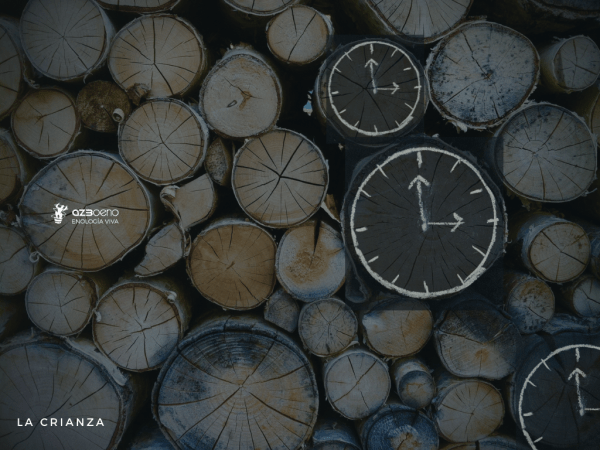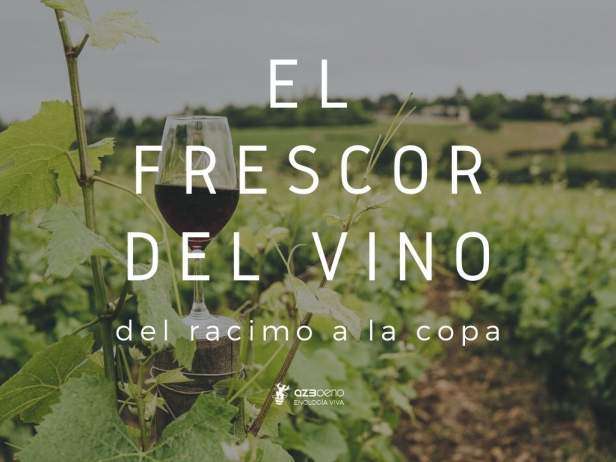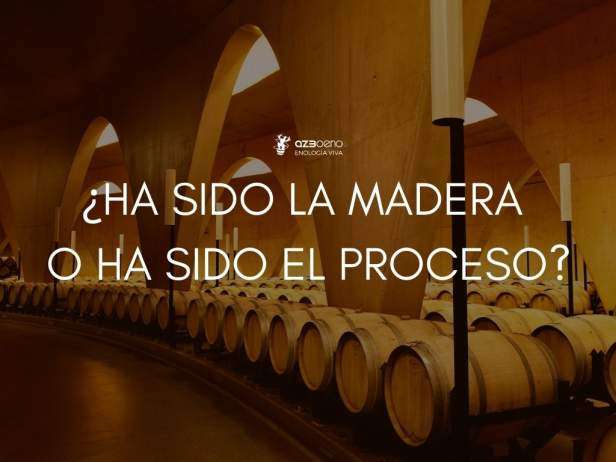
NURTURE, produce, feed and educate a living entity until its full development.
A child, a horse, an orchid, a wine, etc., the final result in its adult state is always proportional to the attention and care invested.
Why do some wines keep the fruit and others lose it during the barrel and bottle aging period?
The answer is not difficult.
Because in addition to choosing the right barrel and toasting, in some cases aging conditions are taken care of to the millimeter and in others, they are underestimated and neglected.
A wine that undergoes sustained stress during aging, tastes stressed in the glass and shows a dislodged potential that it has not been able to develop.
There are 3 main types of stress for aging wine: thermal stress, hygrometric stress and microbiological stress. Enology is an approximate science and the duration and intensity of stress affects each wine differently; we are going to analyze this:
Thermal stress
Temperature is a key parameter in all winemaking, but especially in aging when its effect is sustained over a long period of time. It has a direct organoleptic impact and an indirect financial impact by affecting sales.
In general, a stable temperature in a range of 12 to 16ºC is recommended. Some thoughts on the effects of temperature to take into account when piloting it:
- An increase of 5ºC increases the reaction rate by 50%. The esterifications and polymerizations that will develop the aromatic and gustatory potential of the wine are more or less ordered depending on the concentration of substrates and the reaction speed. What is the optimal temperature as a function of the T/A ratio of the wine?
- The dissolution rate and oxygen consumption depend on the temperature, this often makes the difference from polymerizing to oxidizing, that is to say from the structure to dryness. What level of dissolved O2 does the wine need?
- The dynamics of extraction of compounds from oak varies with temperature. What speed of release do your barrels need to adapt to the balance of your wine?
- The proportion of active molecular sulfur increases with temperature.
- Microbiological development slows down at low temperatures but is favored by the presence of dissolved oxygen.
Hygrometric stress
Between a permeable solid that contains a certain amount of water and alcohol in a liquid state (barrel) and the environment that surrounds it, there is a constant passage of vapors from the solid to the air in proportion to the vapor pressures of each element.
Relative humidity (RH) in the aging room, in addition to conditioning the organoleptic profile, has a great direct financial impact, which means evaporation losses that can vary from 3% to 10% per year. In a room with 1.00 barrels and a moderate evaporation of 4% per year, the "angels" drink 90 hl or 12,000 bottles, that's a lot of money.
Humidity is recommended in the range of 65% to 80% taking into account its effects.
- Low humidity concentrates the wine by evaporation, an effect that can be positive if it is foreseen in the price tag or financially dire if it is not wanted.
- Too high a humidity minimizes evaporation and moderately reduces the alcoholic strength, which also influences the wine profile.
- RH directly determines the filling frequency necessary for each wine.
- The evaporated volume is replaced by air, so that the relative humidity also conditions the phenomena of dissolution and oxygen consumption.
- Excessive humidity favors the development of molds and the risk of environmental contamination such as organohalogen compounds.
Microbiological stress
This can be intrinsic to the wine or environmental.
- When wine is aged with significant populations of potential contaminants, stress to keep them at bay is important. If we cannot or do not want to take other measures (filtration, additives, flash pasteurization), the temperature and the molecular sulfur are the key factors. The higher the temperature, the greater the microbiological development, but also the more molecular sulfurous... a delicate balance to be managed based on the physicochemical parameters of the wine.
- The development of mold on the surfaces of the room and in the barrels themselves can be the cause of contamination by organohalogen compounds (bromine and chlorine phenols and anisoles, lindane, etc.)
Wine needs care 365 days a year.
It is evident that, although the conditions are not optimal, we winemakers are capable of producing very good wines, but the personal and economic effort will be greater and we will leave a lot of fruit along the way.
By knowing and conducting the aging parameters we will achieve the maximum organoleptic and financial profitability for our wine.
Do you want to reduce evaporation losses and the filling frequencies?
Do you want to avoid dryness in wines?
Do you want to keep the fruit?
Look for an expert to carry out a small study of environmental conditions with an oenological and financial focus.
Related news
THE FRESHNESS OF THE WINE, from the bunch to the glass
The fashion for fresh wines has ceased to be fashion to become a trend; more and more consumers are looking for elegance, length and freshness above all.
More than winemaking machines
The winemaker is the artist who observes the vineyard, interprets it and imagines the wine that could be produced from this plot.
Was it the wood or the process?
Today, we are thinking about one of the most important stages of production: the aging of the wine.


